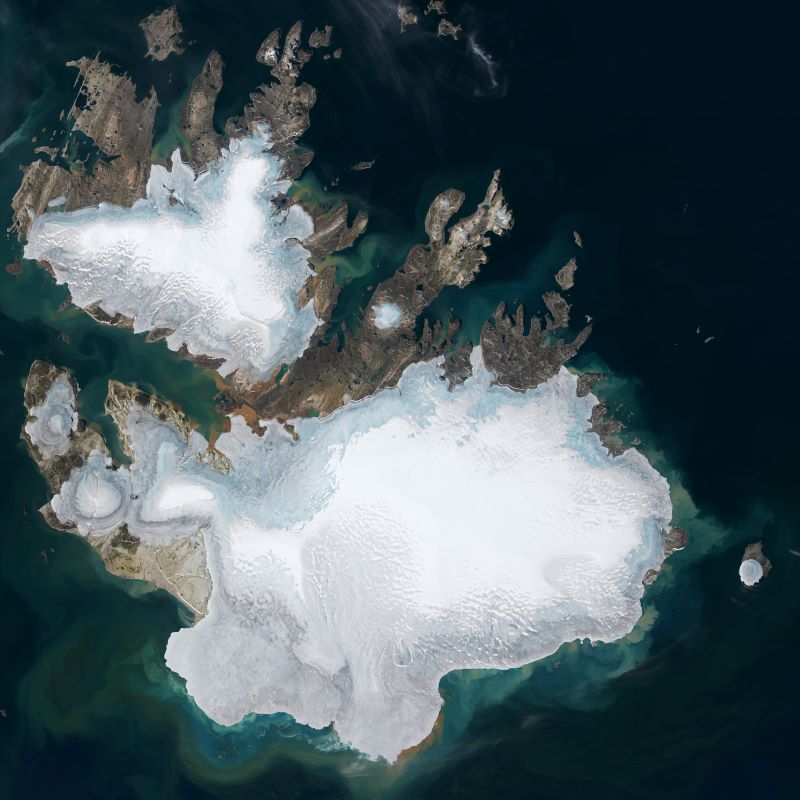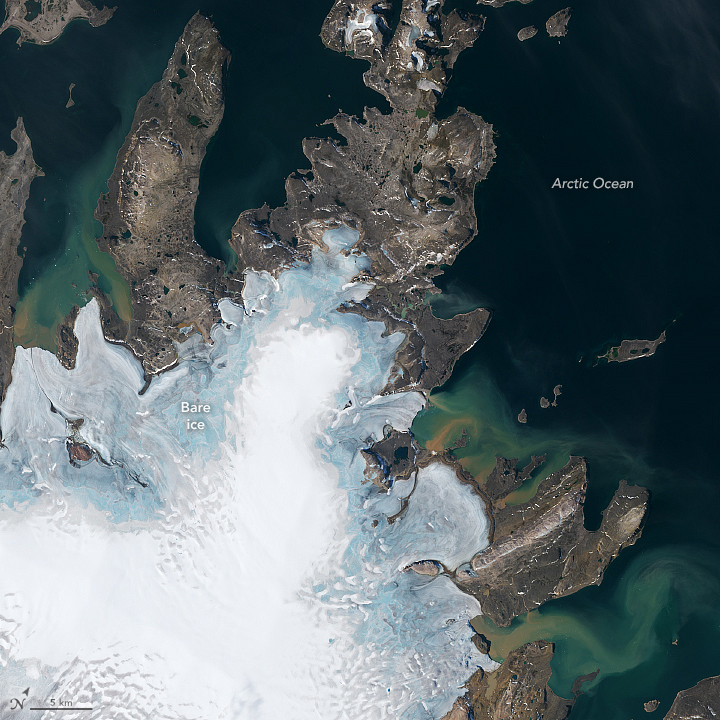
- Svalbard is a Norwegian archipelago in the Arctic Ocean. The islands are located halfway between Norway and the North Pole.
- The ice caps on the islands are melting fast, and the summer of 2024 brought extreme episodes of melting, witnessed by satellite.
- One of the fastest-warming places on Earth, Svalbard had its highest August temperature on record (20.2° C or 68° F) on August 11.
NASA Earth Observatory published this original story on August 15, 2024. Edits by EarthSky.
Svalbard is melting
The Svalbard archipelago’s ice caps suffered extreme episodes of melting in summer 2024, brought on by exceptionally high air temperatures.
Situated between mainland Norway and the North Pole, Svalbard is one of the fastest-warming places on the planet. Over half of its land area is covered with ice, composing about 6% of the planet’s glaciated area outside of Greenland and Antarctica.
In late July and early August 2024, temperatures hovered around 4 degrees Celsius (7 degrees Fahrenheit) above average for this part of the Arctic Circle. The heat took its toll on Svalbard, home to some of Earth’s northernmost glaciers, causing snow and ice to rapidly melt.
A closer look at Nordaustlandet
The Operational Land Imager (OLI) on Landsat 8 captured these images of Nordaustlandet – the second largest island in the archipelago – on August 9 as water and sediment drained off the coast and into the Arctic Ocean. Sediment is likely causing the striking swirls of color in the water surrounding the island. The melting of seasonal snow and an older, compressed layer of snow called firn left some areas of glacial ice (light blue) bare and exposed in the images.

Broken records
According to Xavier Fettweis, a climatologist at the University of Liège, Svalbard’s ice caps broke their all-time record for daily surface melt on July 23, 2024. Svalbard shed about 55 millimeters of water equivalent that day, a rate five times larger than normal.
The exceptional melting continued into August, corresponding with a persistent heat dome that baked parts of Scandinavia’s Arctic. In Longyearbyen, Svalbard’s capital on the main island of Spitsbergen, temperatures reached 20.2 degrees C (68 degrees F) on August 11, its highest August temperature on record and about 2.2 degrees C (4 degrees F) above the previous monthly record, according to meteorologist Daan van den Broek.
Svalbard experienced its warmest summer on record in 2023, according to the Copernicus State of the Climate report. The report cited several contributing factors for the warmth, including below-average sea ice cover and above-average sea surface temperatures.

Bottom line: Svalbard – Norwegian islands between the mainland and North Pole – is one of the fastest-warming places on Earth. Satellites witnessed rapid melt in the summer of 2024.
Read more: What climate change in the Arctic means for the rest of us











